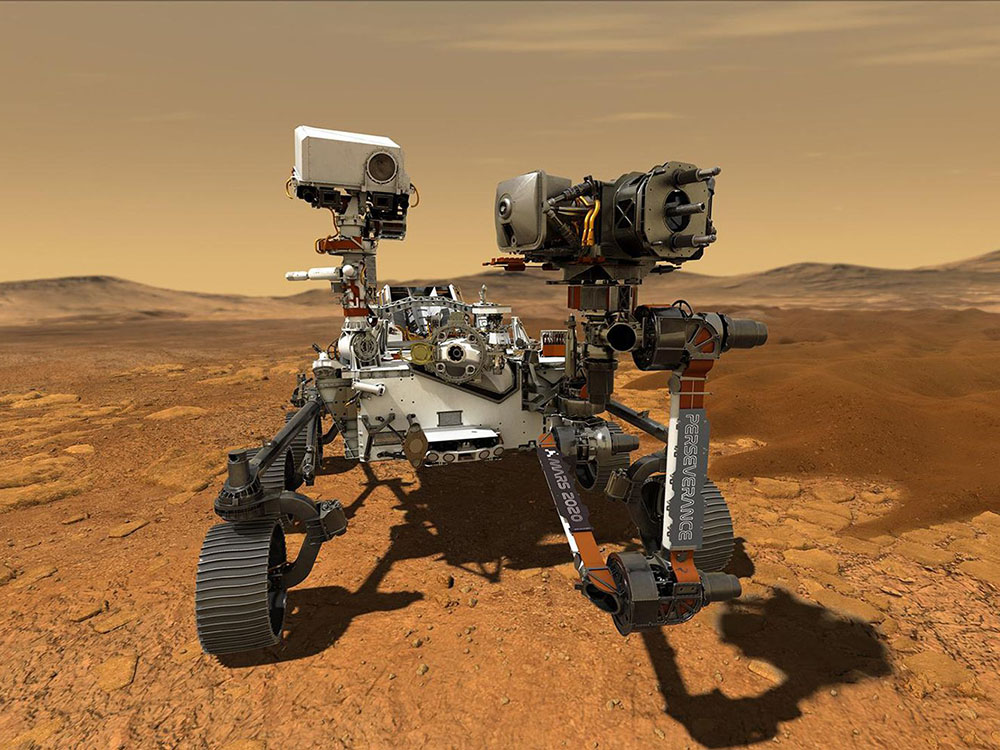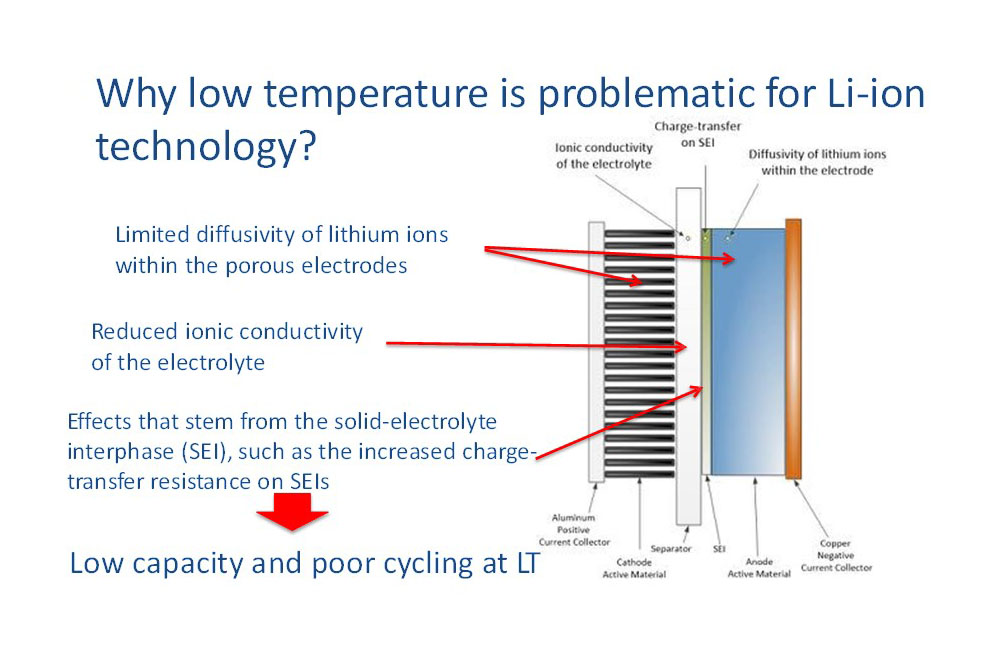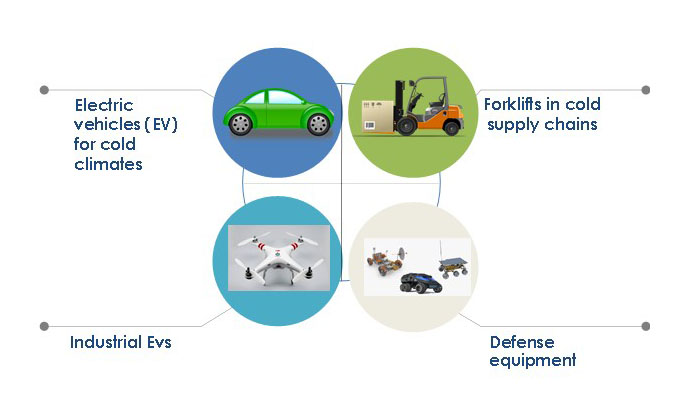
BORN FOR SPACE
The space level challenge
Future Landers and surface probes or package missions for the moon surface that do not deploy Radioisotope Heater Units (RHU) can experience ultra-low temperatures, down to -173 oC.
Lander’s thermal control subsystem ensures that sensitive components, such as the battery, do not suffer such low temperature extremes by providing heating.
However, having a battery which could operate at low temperatures can drastically decrease the energy demand for heating and so increase the duration for which the Lander can survive in darkness, with the goal to survive until the next Lunar day.
The potentially long-up to 14 days-darkness periods which a Lunar surface mission can experience, drive the need for high energy density Li-ion battery technology in order to successfully complete such a mission with as much payload as possible.

OUR SOLUTION
the HELT Cell for Space applications
Our novel Li-ion cell, the HELT Cell, is characterized by High Energy density and capable of operating under Low Temperature conditions has been developed for space applications that do not consider the use of RHU.
The innovative electrochemical cell comprises a Si anode, a low temperature electrolyte and a NCA cathode.
The HELT-Cell:
- exhibits energy density >200 Wh/kg
- operates efficiently at sub-zero temperatures retaining more than 60% of its capacity down to -40 °C,
- charges and discharges at -40 °C without the need of external thermal units.
The Space Battery Market
Space batteries are used mainly for power backup and emergency systems, starting the engine and auxiliary power units, and flight preparation in the aerospace & defence industry. They play a very crucial role as they supply power to the aircraft in the case of power failure.
Batteries in the aircraft must be reliable, durable, have low maintenance, low weight, low cost of ownership and have an extended life.
Nickel-Cadmium, Lead-Acid, and Lithium-Ion are the types of batteries used in the aerospace & defence industry.
The aerospace & defence industry is witnessing a gradual transition from the nickel-cadmium and lead-acid batteries to lithium-ion batteries.
According to a very recent market analysis [Space Battery Market by: Platform, Function, Material Type, Mission, Specific Energy and by Region. Trend, Forecast, Competitive Analysis, and Growth Opportunity: 2018-2023, Startview Research, June 2018], the global space battery market is expected to reach $ 146.1 Million (Y 2023) with >4% GARG for the period 2017-2023.
Some of the main conclusions of the study are summarized below:
- Lithium–based batteries dominate the market and expected to grow at the highest CARG of >4.5 % during 2017-2023
- Secondary batteries is projected to remain the largest and fastest growing segment with a a CARG of >4.5 % for the period under consideration.
- Satellite is expected to be the largest and fastest growing platform type for batteries during the 2017-2023 forecasting period
- North America is dominant due to the presence of NASA and also other spacecraft EOMs and tier players, which are buying batteries in large quantities.
- Major market drivers are: the increasing number of satellites (1738 items at Y2017), the estimated worldwide governmental space expenditures ( $ 79 B) and the expected lunch of 320 small satellites (<50 kg) in 2023, 1.8 times that of 2017
- Main leaders are: SHAFT, Eagle Pitcher Technologies LLC, GS YUASA, EnerSys

GOING FROM SPACE TO EARTH
How a technology developed for Space can revolutionize the low temperature battery market for terrestrial applications
The ground – level challenge:
Lithium-ion batteries have become an integral part of modern technology, however, they perform poorly in the minus Celsius regime. Especially beyond -20 oC, Lithium-ion batteries are practically useless.
Several remote locations on earth are experiencing very low average temperatures, as low as -18 oC.
Subzero temperatures however are typical during the cold months for the most parts in Russia, China, North America, Canada and also Europe.
Moreover, extreme cold waves, such as the one that occurred in winter 2019 putting 70% of the population of the United states under subzero temperatures, seem to appear more often due to the Global Warming phenomenon.
Thus, in cold environments, devices or applications with typical Li-ion battery technology face severe limitations and they need support mechanisms that increase the total cost, the complexity and the power consumption.

OUR SOLUTION
HELT Cell for Earth applications
Given its high energy density content and full operational capability in typical subzero temperatures, a significant amount of earth applications at cold regions can benefit from our technology.
HELT Cell could be incorporated to applications such as: EVs, forklifts or portable tools and also to drones and defense equipment.
Without the need for heat-up devices and/or warmup periods such applications will have lower system complexity, lower total cost and lower power consumption.
Moreover, this technology is compatible with existing production methods since the battery components’ manufacturing is based on processes and equipment that are currently applied in the energy sector at industrial production level.

Want more information? Send us an email at info@inem.gr

